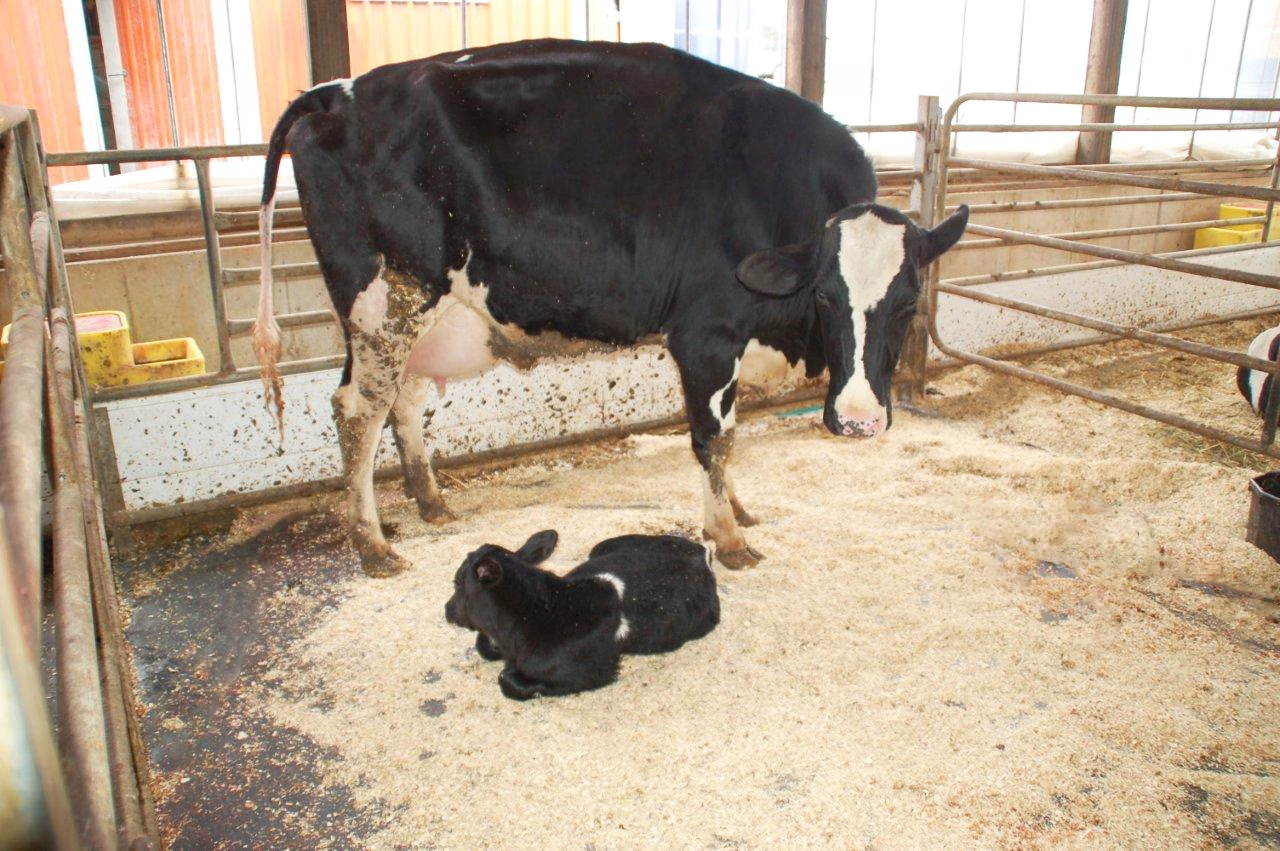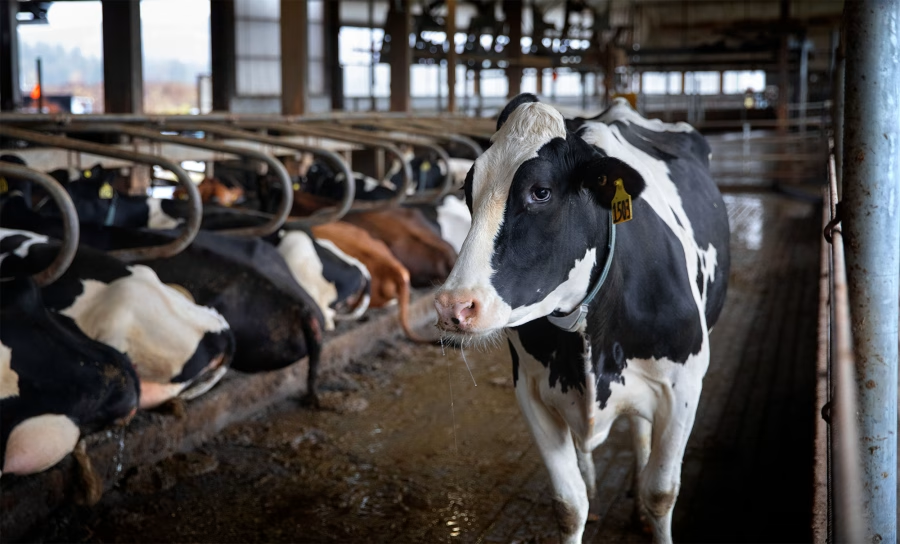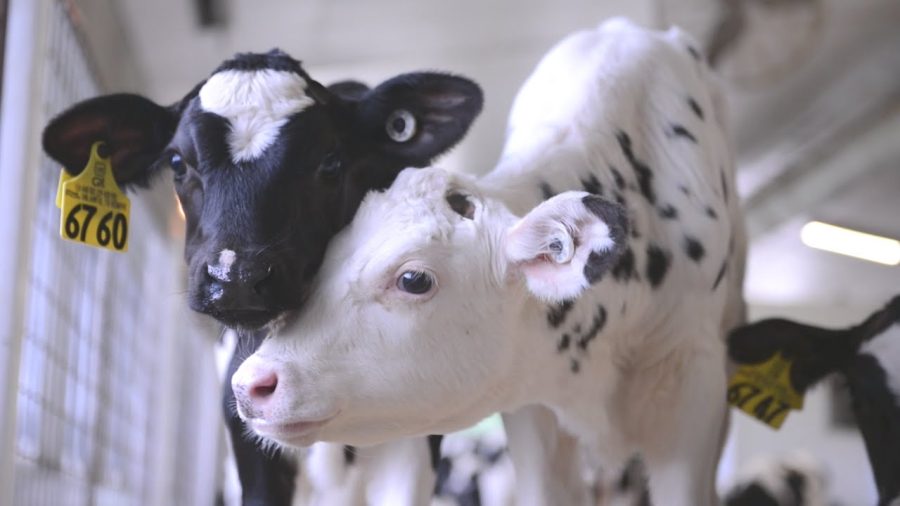See how tackling retained placentas can increase your dairy farm‘s profits. Learn strategies to boost your herd’s health. Ready for a transformation?
Summary: Retained placentas (RP) are a significant issue in dairy farming, affecting the farm’s bottom line in various ways. RP occurs when the placenta or fetal membranes are not ejected within the standard period, typically 24 hours after calving. This failure to separate the placenta from the uterine wall, aided by hormonal and enzymatic interactions, leads to retention, which may predispose cows to further issues like infection and decreased fertility. Retained placentas occur between 5 and 15% of dairy cows, with this range varying depending on genetics, diet, and general herd management approaches. The economic effect of RP is immediate and long-term, affecting milk output, reproductive difficulties, and overall economic losses. Managing these health difficulties entails higher feed prices, labor, and tighter health procedures. The financial impact of RP goes beyond acute treatment, with research by the University of Wisconsin finding that RP may cost up to $300 per cow, including lower milk output, more outstanding vet fees, and possibly losing cows to culling. Genetic selection is a game-changing strategy for dairy farmers to manage retained placentas in their herds.
- Incidence and Impact: Retained placentas (RP) occur in 8-12% of dairy cows and can severely impact milk production and overall cow health.
- Economic Consequences: The cost associated with RP includes treatment, reduced milk yield, and potential fertility issues, which can add up to significant financial losses.
- Genetic Influence: Selecting breeds with lower incidences of RP can mitigate risks. Genetic selection plays a crucial role in long-term prevention.
- Preventive Measures: Proper nutrition, adequate mineral intake, and stress reduction are proactive steps to prevent RP.
- Timely Intervention: Early identification and immediate veterinary intervention are critical in managing RP effectively.

Did you know 8–12% of dairy cows have retained placentas after calving? This prevalent problem may result in an average economic loss of $200 per cow, severely affecting a dairy farm’s bottom line. Addressing this issue front-on is critical to enhancing herd health and guaranteeing the profitability of your dairy enterprise. But why is retained placenta a significant problem, and what can be done about it? Look at this problem to find practical answers and protect your farm’s financial health.
Why Your Dairy Operation Can’t Afford to Ignore Retained Placentas!
| Year | Study | Incidence Rate | Location | Notes |
|---|---|---|---|---|
| 2015 | National Dairy Study | 7.5% | USA | Large-scale survey |
| 2020 | Management and Welfare Study | 8.3% | UK | Includes various farm sizes |
| 2018 | Nutrition Impact Review | 6.8% | Canada | Focus on feed quality |
Understanding retained placentas starts with identifying what they are: a retained placenta, also known as retained fetal membranes (RFM), happens when the placenta or fetal membranes are not ejected within the standard period, typically 24 hours after calving. Biologically, this procedure depends on properly separating the placenta from the uterine wall, aided by hormonal and enzymatic interactions. Failure of these procedures leads to retention. Such events may predispose cows to further issues like infection and decreased fertility. According to the University of Minnesota Extension, retained placentas occur between 5 and 15% of dairy cows. This range might vary depending on genetics, diet, and general herd management approaches.
Understanding retained placentas starts with identifying what they are: a retained placenta, also known as retained fetal membranes (RFM), happens when the placenta or fetal membranes are not ejected within the standard period, typically 24 hours after calving. Biologically, this procedure depends on properly separating the placenta from the uterine wall, aided by hormonal and enzymatic interactions. Failure of these procedures leads to retention. Such events may predispose cows to further issues like infection and decreased fertility.
According to the University of Minnesota Extension, retained placentas occur between 5 and 15% of dairy cows. This range might vary depending on genetics, diet, and general herd management approaches.
Don’t Let Retained Placentas Drain Your Dairy’s Profits!
| Economic Impact | Cost (USD) per Incident | Details |
|---|---|---|
| Treatment Costs | $100 – $200 | Veterinary fees, antibiotics, and other medications are necessary to treat RP and prevent secondary infections. |
| Decreased Milk Production | $250 – $400 | Cows with RP often suffer from reduced milk yield due to their impaired health and immune response. |
| Increased Culling Rate | $800 – $1,200 | Cows with RP are more likely to be culled early, leading to higher replacement costs and lost production. |
| Extended Calving Interval | $1.50 per day | The delay in returning to normal reproductive cycles can impact your overall herd fertility rates. |
| Overall Economic Loss | $500 – $3,000 | Combining all these factors, the total economic impact of RP per case can significantly affect your bottom line. |
The economic impact of retained placentas (RP) on dairy farming is immediate and long-term, affecting your pocketbook in various ways. First and foremost, milk output is reduced. Losses are documented at 38.5% for primiparous cows, where RP is more prevalent (source). This impacts both the amount and quality of milk, as stressed cows produce milk with reduced fat content—which is concerning given the U.S. trend toward increasing milk fat percentages, projected to reach 4.29% by April 2024. The financial implications of this issue cannot be overstated, making it a top priority for dairy farmers.
Long-term health issues exacerbate these expenditures. Cows with RP often have reproductive difficulties, including reduced conception and more excellent culling rates. The effect on fertility may account for about 28.5% of overall economic losses in multiparous cows (ResearchGate).
Managing these health difficulties entails higher feed prices, labor, and tighter health procedures. The financial impact of RP goes beyond acute treatment. Research by the University of Wisconsin found that RP may cost up to $300 per cow. These expenses include lower milk output, more outstanding vet fees, and possibly losing cows to culling. Financial losses are $350.4 per event in primiparous cows and $481.2 in multiparous cows (ResearchGate). The varied economic burden underscores the need for excellent preventive and timely treatments to preserve your cows and keep their earnings in good condition.
Understanding the Multifaceted Causes and Risk Factors Behind Retained Placentas (RP) Can Safeguard Your Dairy Operation from Significant Setbacks
Understanding the many causes and risk factors of retained placentas (RP) may help protect your dairy company from significant setbacks. One of the leading causes is nutritional deficiency, which may impair the cow’s general health and reproductive effectiveness. Low levels of selenium and vitamin E are important risk factors. The Journal of Dairy Science states, “Nutritional imbalances, deficient levels of selenium and vitamin E, are significant risk factors for RP in dairy cattle.”
Difficult or extended calving, which often causes stress or injury to the reproductive system, might also predispose cows to RP. Research published in the Journal of Animal Reproduction found a clear link between dystocia (difficult calving) and an increased risk of retained placentas.
Infections, especially those that affect the uterine lining, are another critical factor. Metritis and endometritis might impede the placenta’s natural separation process. The Veterinary Journal reports, “Bacterial infections can significantly impair uterine function, increasing the risk of RP.”
Environmental and genetic variables both play essential roles. Stress from poor living circumstances or rapid dietary changes may impair the physiological mechanisms required for placental evacuation. Furthermore, specific genetic lines have been linked to RP, highlighting the necessity of selective breeding in minimizing this risk (source: New Zealand Veterinary Journal).
Genetic Selection: The Game-Changing Strategy Every Dairy Farmer Should Know About
As we go further into the topic of retained placentas (RP) in dairy cows, knowing the function of genetics might give valuable insights. According to research, cows may be genetically susceptible to this illness, making it a reoccurring issue in select herds. Dairy producers may efficiently manage this issue over time by choosing genetic features that minimize the risk of RP.
Genetic selection is not new in dairy farming. Still, its application to RP provides a unique way to improve herd health and production. The USDA offers substantial materials on genetic improvement in dairy cattle, emphasizing the value of educated breeding strategies in mitigating health concerns such as RP. Farmers interested in learning more about this method should visit the USDA’s dedicated dairy cow genetic selection site, which includes thorough recommendations and research data.
Using genetic selection entails selecting and breeding cows with a reduced frequency of retained placentas, progressively lowering the prevalence of this problem across the herd. Farmers may breed more robust cows and improve herd performance by concentrating on genetic markers related to reproductive health. Taking a proactive approach to dairy operations enables long-term sustainability and profit retention.
Proactive Measures to Prevent Retained Placentas: Ensuring Long-Term Profitability and Productivity in Your Dairy Operation
Preventing retained placentas is more than simply addressing acute health concerns; it is also about safeguarding your dairy operation’s long-term profitability and productivity. Here are some evidence-based strategies to help you reduce the incidence of retained placentas (RP) in your herd:
- Dietary Recommendations
- A well-balanced diet is vital for avoiding RP. Ensuring proper micronutrient intake is critical. For example, selenium is essential for uterine health. According to the National Animal Health Monitoring System, maintaining appropriate selenium intake may cut the number of retained placentas by up to 50%. Ensuring your cows have enough vitamin E may help boost their immune system and reproductive health.
- Proper Calving Management
- Effective calving management requires thorough monitoring of cows throughout the peripartum period. Proper hygiene and stress reduction are essential. According to a paper published in the Journal of Veterinary Medicine, reducing stress during calving, providing a clean and pleasant birthing environment, and assuring the presence of experienced attendants may dramatically reduce the chance of RP. Prompt intervention during protracted or complex labor is critical to avoiding problems that might result in retained placentas.
- Timely Veterinary Interventions
- A strong connection with your veterinarian may be a game changer. Regular health screenings and prompt actions may help to identify possible problems before they become serious. According to the Journal of Dairy Science, instituting a systematic reproductive health monitoring program may detect at-risk cows and allow for preventative interventions, such as prostaglandins, to help placental evacuation.
Integrating these preventive techniques may significantly minimize the incidence of RP, leading to improved herd health and optimum milk production. Remember, proactive management improves animal welfare while protecting your dairy’s profitability.
Treatment Options for Retained Placentas: What Every Dairy Farmer Needs to Know!
| Treatment Option | Pros | Cons |
|---|---|---|
| Manual Removal | Immediate relief for the cowCan prevent secondary infections | Risk of uterine damageStressful for the cowRequires skilled personnel |
| Antibiotic Therapy | Prevents infectionsWidely available and relatively inexpensive | Overuse can lead to antibiotic resistanceDoes not address the root causePotential residue issues in milk |
| Oxytocin Injections | Stimulates uterine contractionsNon-invasive | Needs to be administered within a short time frame postpartumVariable efficacy |
| Herbal Remedies | Natural alternativeLow risk of side effects | Lack of scientific validationVariable effectiveness |
| Supportive Care (Nutrition and Hydration) | Boosts overall cow healthReduces stressEasy to implement | Does not directly remove the placentaMay require additional interventions |
When dealing with retained placentas in dairy cows, it is critical to understand the available treatment options, including physical removal, hormonal therapies, and antibiotics. Each approach has advantages and disadvantages, and your decision should be based on evidence-based advice to guarantee your herd’s health and production.
Manual Removal: This approach entails physically retrieving the cow’s retained placenta. While it may be feasible, substantial concerns include harm to the cow’s reproductive system and increased infection risk. Research published in the Journal of Dairy Science suggests that only a professional veterinarian should remove manually to minimize dangers. The technique may be unpleasant for both the cow and the operator, and it fails to address any underlying concerns that may have contributed to the retention in the first place.
Hormonal Treatments: Retained placentas may be expelled with hormonal therapy like oxytocin or prostaglandin. Oxytocin is very intriguing. According to the Veterinary Record, oxytocin may increase uterine contractions and help in evacuation. The disadvantage of hormone therapies is that they may not function if infections or other problems cause the retention, and repeated dosages might result in decreasing returns in efficacy.
Antibiotics: Antibiotics may be given systemically or locally when there is a significant risk of infection or pre-existing illnesses. While this approach may help avoid serious diseases like metritis, it does not address mechanical placental removal. According to research published in Animal Reproduction Science, antibiotics may be an effective adjuvant. Still, they should not be used as the only treatment strategy. Over-reliance on antibiotics may also contribute to resistance difficulties, which is unfavorable in the present regulatory climate aimed at minimizing antibiotic use in cattle.
Recent research has examined nonsteroidal anti-inflammatory medicines (NSAIDs) to decrease inflammation and enhance outcomes in dairy cows with retained placentas. These developments, supported by clinical research, can significantly improve your herd’s health and productivity. To delve further into this topic, check out a detailed study on NSAIDs and their promising results here.
A combined approach is often the most successful. Oxytocin may assist the cow in naturally discharging the placenta, and antibiotics can be given to avoid infection. Manual removal should be regarded as a last choice and carried out by a professional. Always consult your veterinarian to create a thorough strategy suited to your herd’s requirements.
Real-Life Success Stories: How Dairy Farmers are Winning the Battle Against Retained Placentas
Real-life examples from dairy farmers worldwide demonstrate the necessity of proactively managing and reducing retained placentas. For example, John from Wisconsin has a recurring problem with retained placentas in his herd. John worked with his veterinarian to develop a well-balanced feeding regimen with Vitamin E supplements. According to recent research, Vitamin E significantly lowers the prevalence of retained fetal membranes. Within six months, John saw a dramatic decline in RP instances, which resulted in healthier animals and increased milk output.
In another situation, Maria in California addressed the issue by implementing a thorough health monitoring system. She discovered and handled possible risks by regularly monitoring her cows’ health and breeding habits. This method, frequent vet check-ups, and judicious feed modifications reduced the RP incidence rate while improving her herd’s overall reproductive performance. According to research conducted in Isfahan province, a continuous monitoring methodology may significantly reduce RP incidences.
Tom, a dairy farmer in New York, improved his breeding program to reduce twinning, a risk factor for RP. Numerous studies have shown that twinning increases the risk of RP. Tom’s farm experienced a significant drop in RP instances after employing selective breeding procedures and modern reproductive technology, resulting in improved milk output and fertility rates.
FAQ: Addressing Common Questions and Concerns About Retained Placentas
What are the signs of a retained placenta in dairy cows?
Retained placentas are usually seen when a cow has not vomited the afterbirth within 24 hours after calving. Symptoms include:
- Foul-smelling discharge.
- A visible membrane protruding from the vulva.
- A loss of appetite or decreased milk supply.
If you see these indicators, you must act quickly.
When should I call a vet?
Contact a veterinarian if the cow has not discharged the placenta within 24 hours. Delaying veterinary assistance might result in serious problems, such as uterine infections or other systemic health concerns, affecting the cow’s well-being and your operation’s bottom line.
What are the potential long-term effects on cow health and productivity?
Retained placentas may have long-term effects on a cow’s health, such as recurrent uterine infections, decreased fertility, and longer calving intervals. These difficulties may result in higher veterinary bills and poorer overall output, reducing the profitability of your dairy farm.
Can I prevent retained placentas?
Preventive measures include maintaining appropriate nutrition, assuring good calving management, and addressing genetic selection for reproductive health features. Regular veterinarian examinations and proactive health management methods may significantly lower the danger.
Is there a role for supplements in preventing retained placentas?
Yes, providing your cows with a proper supply of vitamins and minerals might be advantageous. Vitamin E and selenium, for example, have been demonstrated to lower the risk of retained fetal membranes. Consult your veterinarian to create a customized supplementing strategy for your herd.
The Bottom Line
Finally, keeping a close check on retained placentas in your dairy herd is more than simply keeping your cows well; it’s a smart business choice that may significantly impact your dairy’s profitability. Understanding the many reasons and adopting proactive efforts to avoid and cure retained placentas helps your herd’s long-term health and production. Collaboration with your veterinarian is essential for tailoring these techniques successfully to your unique business since untreated retained placentas may result in significant financial losses, averaging $350.4 per occurrence in primiparous cows and $481.2 in multiparous cows. Consult with your veterinarian, keep educated, and constantly adapt to new studies and best practices—addressing retained placentas is not just a question of immediate health advantages but also a sound economic strategy for sustaining the life and sustainability of your dairy operation. For information on optimal nutrition and successful dairy management, visit The Bullvine.













